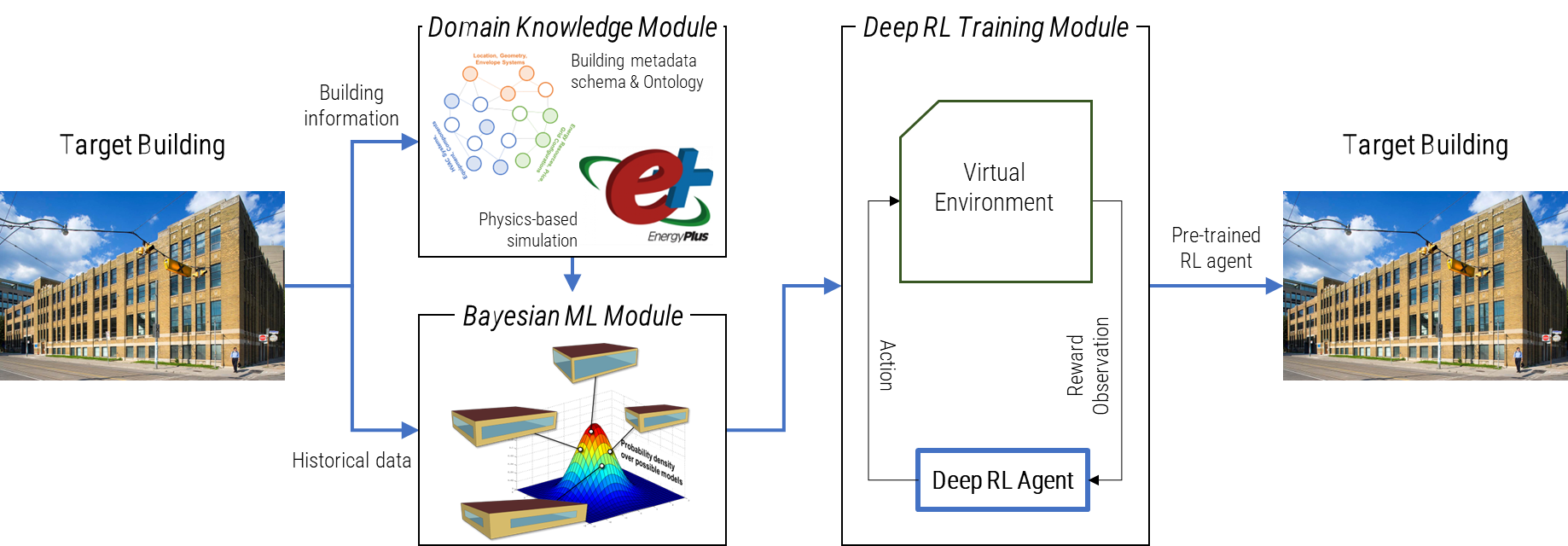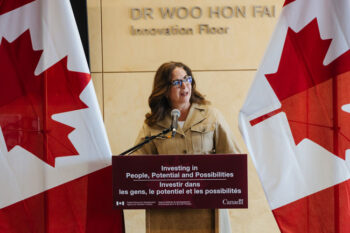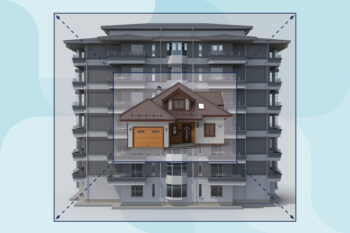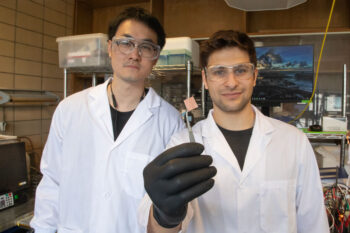We know we are supposed to switch the lights off when we leave a room, but what about the furnace, or the air-conditioning? According to Professor Seungjae Lee (CivMin), unnecessary heating and cooling of buildings wastes a lot of energy — but artificial intelligence (AI) could offer a better way forward.
Lee’s latest research project, Grid-Interactive Smart Campus Buildings, is a three-year pilot project that aims to reduce U of T’s climate footprint by leveraging AI to optimize the heating and cooling systems in existing buildings. The project is carried out in partnership with Professor Chi-Guhn Lee (MIE) and is jointly funded by the Climate Positive Energy and Climate Positive Campus initiatives at U of T.
“Buildings account for around 25-30% of total energy consumption and energy sector greenhouse gas emissions in Canada and worldwide,” says Lee.
“Given that people spend an average of 90% of their lives indoors, ensuring comfortable and healthy indoor environments is a critical function of building systems. But we could be a lot smarter about using the resources we have.”
Lee’s research applies AI solutions to building science to tackle this issue. In the first year of the project the team is focused on creating a digital twin, a.k.a., a virtual representation, of the Exam Centre at 255 McCaul Street.
In the next stage, the researchers will develop a novel deep reinforcement learning algorithm for the optimal control of the heating and cooling systems. This algorithm will be pre-trained with the digital twin to avoid putting excessive stress on the actual building.
After the pre-training with the digital twin, the algorithm will be implemented in the real Exam Centre and further fine-tuned through interactions with the building. If successful, Lee hopes to use the same approach to convert more campus buildings to smart buildings, contributing to U of T’s Low-Carbon Action Plan.
“60% of campus energy consumption on the St. George campus comes from heating and cooling buildings,” he says.

Lee’s research group is also investigating how humans interact with their buildings in an NSERC Discovery-funded project titled Scalable Cyber-Physical-Human Systems for Intelligent and Interactive Buildings. This is an emerging research area with relatively little published research, something Lee hopes to change.
Where previous methods relied on correlations in data such as the correlation between thermostat setpoint temperature and other parameters, such as the time of the day, Lee and his team are instead using causal relations — for example, the factors affecting occupants’ decision-making on thermostat setpoint temperature — to develop reliable human-centric smart solutions.
“Once we understand how humans interact with their buildings in the light of causation, we can realize more intelligent and human-interactive buildings,” says Lee.
While Lee is not the only researcher interested in using machine learning and AI techniques in buildings, the sector has lagged behind others, such as the automotive or health-care industries, because of how different the energy consumption profiles and needs of individual buildings can be.
“A solution customized for one building is not necessarily fully transferable to another,” he says. “This is a major roadblock in the path of making our buildings smarter.”
“If we can seamlessly combine existing building science domain knowledge and AI, we can build scalable and reliable solutions to create sustainable buildings.”
To tackle this issue, the team is partnering with PLC Group, along with funding from the Ontario Centre of Innovation, to develop a scalable digital twinning tool for building energy systems. If this tool is effective, it will equip the building industry with a solution to create intelligent, interactive and more sustainable buildings around the world.
“The use of AI in building management systems not only has the potential to significantly improve the sustainability of our built environment, but also the way in which we interact with our built environment,” says Lee.



